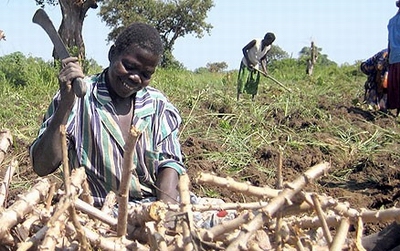New ways to utilize starch from cassava can provide food to an additional 30 million people without taking more arable land than today. By 2030 the figure will be 100 million. In addition, the same land can also contribute to an increased production of bioenergy. This is shown in a new study from researchers at the Swedish University of Agricultural Sciences (SLU) and China Agricultural University (CAU) Cassava or manioc (Manihot esculenta Crantz.) is grown for its high starch content. The large tubers are very starchy and processed into flour or semolina (tapioca). This is the staple food for between 0.5-1 billion people in Africa, Latin America and Asia. The plant is grown on about 19 million hectares of land.

There are also strong interests to increase the use of cassava starch for industrial use. This can reduce the amount of food or result in even more land being utilized for production. Researchers at SLU and CAU have found that discarded stems contain surprisingly large amounts of starch, up to 30% of dry mass. In today's production the stems are removed from plantations and are considered a waste problem.
With simple water-based technologies, up to 15% of starch stem dry weight can be extracted. If this starch can be used for industrial purposes, root starch previously used industrially can provide food for an additional 30 million people in the world today and close to 100 million in 2030.
The study also shows that residues and process for the extraction of stem starch can be used for the production of biofuels (solid fuel and biogas) and provide substantial added values. Without land use increases, the researchers show that food and bioenergy in combination can contribute to sustainable development and to combat malnutrition and poverty globally.
"There is great potential with the new ideas about using cassava stems as an industrial commodity, rather than as today a waste problem. We were actually surprised to find such large amounts of nutritious starch in a biomass residue, mostly stored in xylem tissues of the stems," says Associate Professor Shaojun Xiong, who is leading the research in this field.





